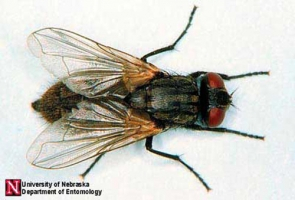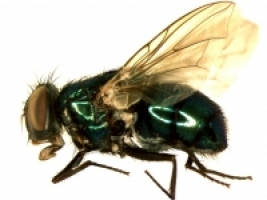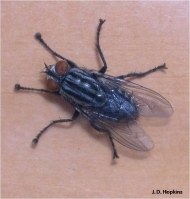by David Moore
Manager of Technical Services and Board Certified Entomologist
with contributions by Eric Smith, PhD, BCE
Warm weather is here and along with it comes many flying insects, including large filth flies. The most common of the larger flies that bother us are the house fly, blow or bottle flies, flesh flies.



